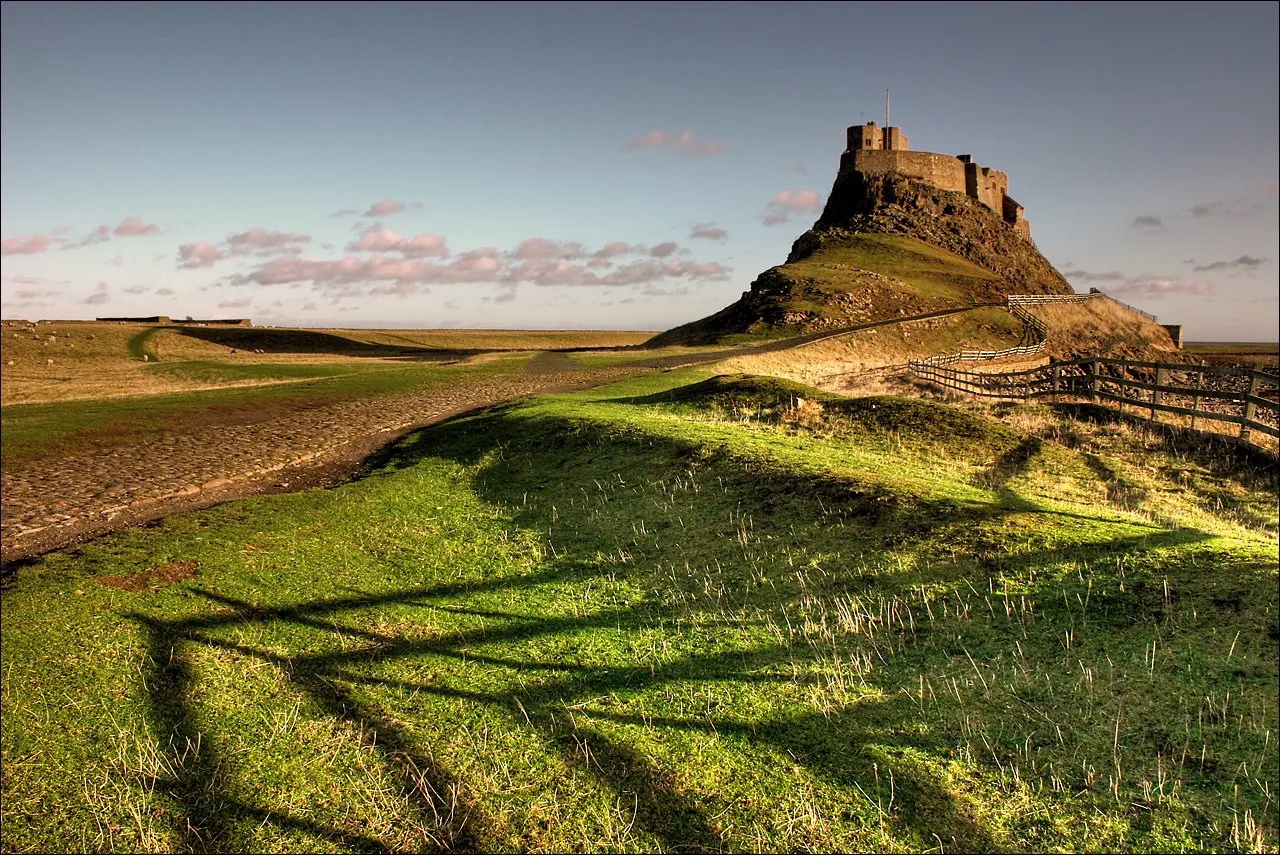Lindisfarne Castle was founded in the 16th century. It is located on the Holy Island, perched on a cliff in Northumberland, England. In 635, the famous Irish preacher Saint Aidan created a community of monks, which considered the Holy Island to be their refuge.
 |
| Lindisfarne Castle |
It was this community that gave rise to the spread of Christianity in northern Britain. In 1082, the monastery located here was rebuilt after the plundering of the Vikings.
Lindisfarne Castle is located near the border of England and Scotland, so it took part in a large number of historical events related to the conflicts of these countries. The castle looks like a small fortress and its first task was to defend English ships from the attacks of the Scots and Vikings.
History
In 1550, King Henry VIII ordered the use of a stone from the monastery of Lindisfarne, which had already been closed at the time, to build a new castle. In 1570-1572, the castle was constantly fortified, and ship equipment was kept in the monastery. Under Elizabeth I, special structures for artillery pieces appeared in the castle.
 |
| Lindisfarne Castle |
The importance of Lindisfarne Castle as a fortress diminished after King James VI (I) united the Scottish and English thrones. The garrison of the castle remained here for some time to protect the port. In the 18th century, the castle was captured by the Jacobites, but quickly liberated by the forces of Berwick's troops.
The Jacobites, who were captured, dug an underground passage and escaped from custody. Before returning home, they hid for nine days in the vicinity of Bamburgh Castle. In the 19th century, Lindisfarne served as a coast guard post, attracting tourists.
 |
| Lindisfarne Castle |
In 1901, the castle was sold to Edward Hudson, who founded Country Life magazine. It is rumored that he, along with the architect Sir Edwin Lutyens, saw the castle during a trip to Northumberland, and decided to sneak inside to see it.
The castle was rebuilt in the "Arts and Craft" style, which means "Arts and Crafts". Edwin Lanches often used this architectural style, which combines different elements. Lindisfarne Castle was one of the projects that were featured in Edward Hudson's magazine. Since 1944, the castle, along with the garden, came under the control of the National Trust.
